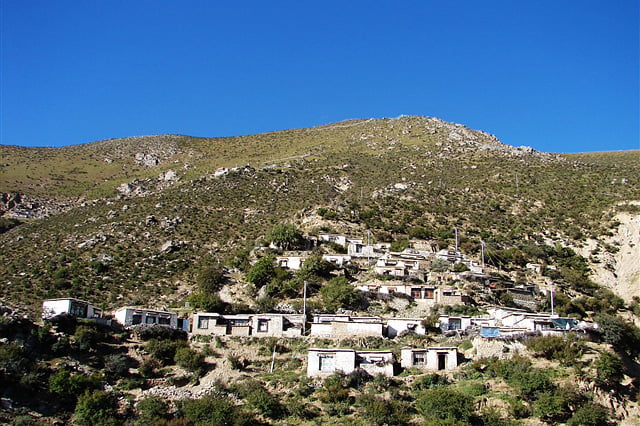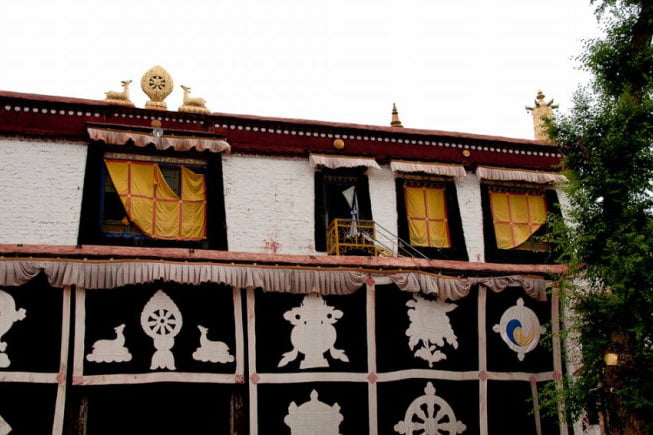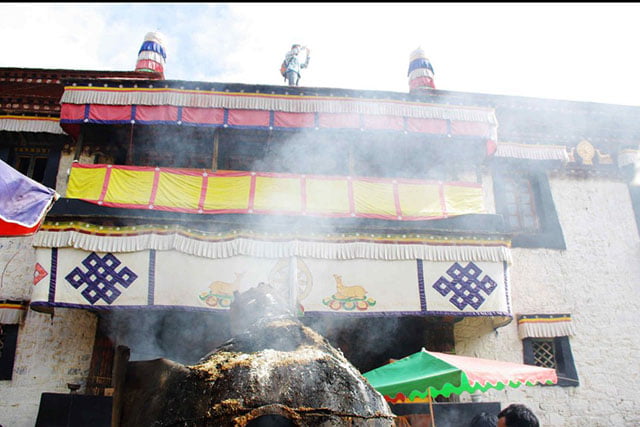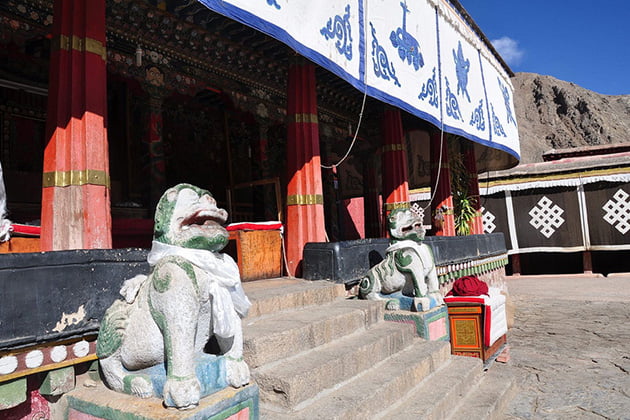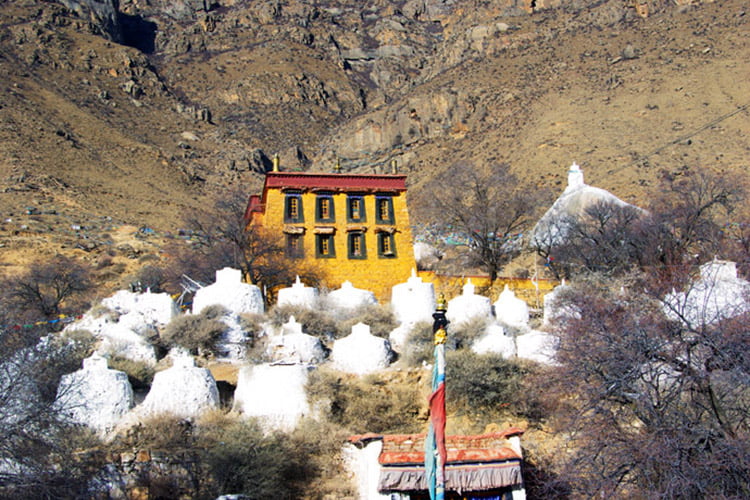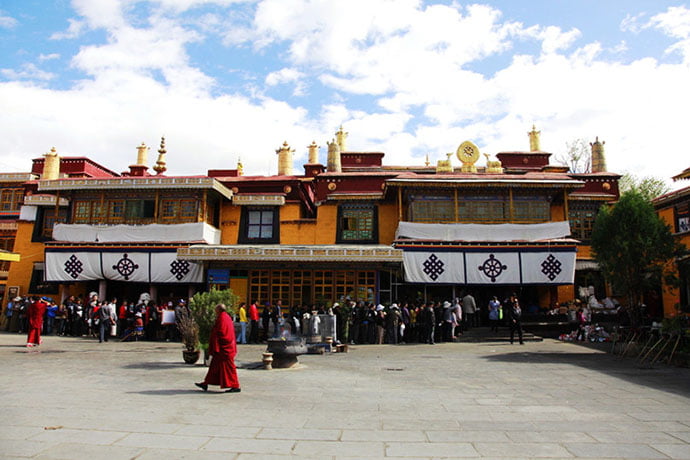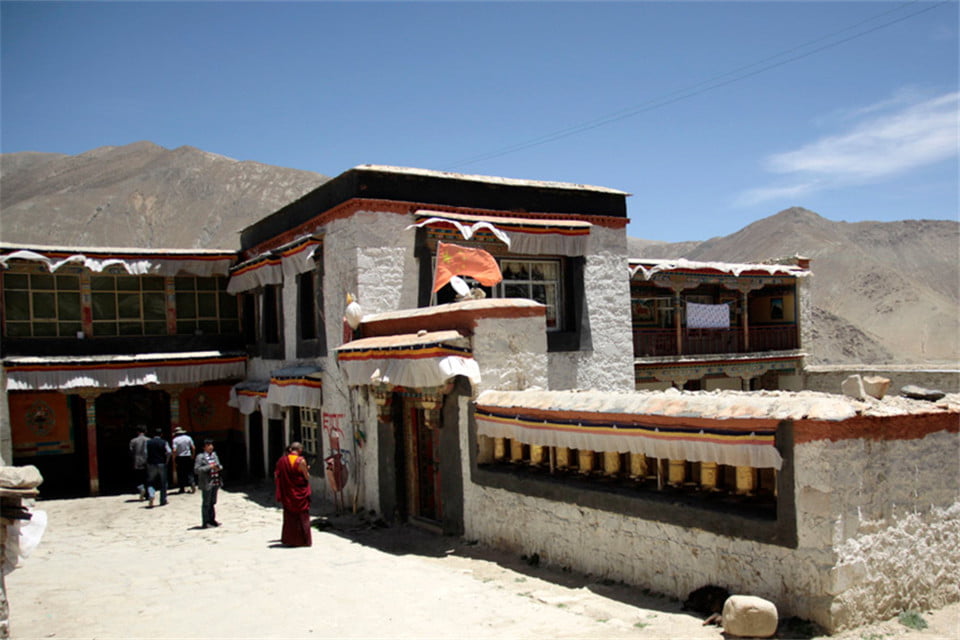Manager All your Tibet Travel Tips in one place
To provide best travel experience in Tibet which is not only valuable but also enjoyable
Tibet Travel Guide
Tibet seems like a mystery lies in the corner of the world, but for the Buddhists, it lies in the center of the world. This magical land has a vast territory and few inhabitants, covered with snow-capped mountains, lush forests and turquoise holy lakes. Nowadays, visiting the “Roof of the World” is quite easy. Here are some refined advices for you like where to visit, when to start your tour, how to get to Tibet, what to pack, accommodation in Tibet…
Tibet Permits and Chinese Visa
The first step for foreign travelers to reach the Tibet Autonomous Region is to get a Chinese Visa. The next is to apply for kinds of Tibet Permit you need according to the places you will visit in Tibet.
Chinese Visa
Here refers to the regular Chinese Visa. Basically, the easiest one for obtaining the Tibet Travel Permit is Type L, a tourist visa. If you are holding other types, like M, F, S, etc. you need to provide a letter of identification.
Aliens’ Travel Permit
Besides the Tibet Travel Permit, another most common Tibet permit is Aliens’ Travel Permit. It’s a paper for foreigners to travel out of Lhasa. For example, for visiting Mt. Everest.
China Group Visa
For foreigners who will enter Tibet from Nepal, they have to apply for the China Group Visa from the China Embassy in Kathmandu. And they need a local travel agency’ help. It’s a compulsory regulation.
Tibet Travel Permit
As the basic paper for international travelers to enter Tibet Autonomous Region, it’s issued by the Tibetan Tourism Bureau. Thus, insiders call it “TTB” as well.
Tibet Border Pass
If you are holding a Chinese ID Card or a Chinese Passport, or a residence from Hong Kong or Macao with a Return Permit, you need to apply for a Tibet Border Pass, called as “边防证” in Chinese for visiting Everest.
Military Permit
For visiting some remote areas or sensitive border areas in Tibet, foreigners have to provide the Military Permit. For instance, if you want to do a Kailash Kora Tour.
Useful Tibet Tour Information
- Where is Tibet Located
- Tibet Weather
- Tibet Maps
- Flights to Tibet
- Train to Tibet
- Tibet Tour Cost
- Tibetan Food
- Money & Currency
- Shopping in Tibet
- Roads in Tibet
- Etiquette and Taboos
- Tibet Tour Calendar
Useful Tibet Tour Advices
- Best Time to Visit EBC
- What to Pack
- Tibet Trekking Advice
- Avoid High altitude Sickness in Tibet
- Tibetan Greetings
- Best time to Visit Kailash
- Tibetan Local Customs
- Tibetan Language
- Useful Tibet Travel Tips
More about Tibet Tour
- Enter Tibet from Nepal
- Tibetan Festivals
- How to Obtain Chinese Visa
- Tibet Overland Tour
- Tibet Train Schedules and Fares
- Online Tibet Permit Application
- Tibet Permit without Tour
Tibet Travel News
- Where is Tibet Located
- Tibet Weather
- Tibet Maps
- Flights to Tibet
- Train to Tibet
- Tibet Tour Cost
- Tibetan Food
- Money & Currency
- Shopping in Tibet
- Roads in Tibet
- Etiquette and Taboos
- Tibet Tour Calendar
Tibet Travel FAQs
To visit Tibet you should have a valid passport, a Chinese visa and Tibet Travel Permit, it is also called a Tibet Entry Permit or Tibet Visa. If your visa is not Tourist Visa, type L, work permit or invitation letter need to be provided.
Generally speaking, from April to October are the best time to visit Tibet, as in these months, we have a warmer and beautiful climate. Choosing the best season to travel to Tibet mainly depends on the tour you are interested in. If you are interested in Mt.Everest Tours, the best time to visit would be in May, June, September and early October. In these months, EBC is comparatively less windy and clear, blue sky allows you to view the mighty peak of Mt. Everest from the Everest Base Camp. If you are interested in Mt. Kailash and far Western part of Tibetan plateau, then May, June, July and September is the best time to travel. In these months it is warmer and you will have no rain during your Kailash trekking days; you will also have the opportunity to see local pilgrims doing the Kora (trek). If you are interested in experiencing Tibetan festivals, then August is the best time to travel, in which there are numbers of popular festivals both ritual and cultural celebrated in Tibet. and best time for Trekking in Tibet is from May to Sept.
However, having a winter tour from November to February can be an unique experiences if you are interested to experience local activity and culture. by travel Tibet during the winter, you can avoid the tourist crowds and costs are comparatively much cheaper. Nevertheless, you can experience the mass of local pilgrims around the monasteries and temples, because winter is a best travel season for Tibetan pilgrims.
To obtain Tibet Travel Permits, it is compulsory to make your Tibet tour arrangements through a local travel agency, and then provide clear scan copies of you passports and China visa to apply for the Tibet permit (TTP). Please note that it’s impossible for a foriegners to board either flights or trains to Tibet without the Travel Permit. The permits themselves specify every destination and towns that you would visit during the tour and cannot be changed once you have arrived in Tibet; therefore, make sure that you have listed all your interested places in the tour with your tour operator before they apply for the permit. It usually takes 5 to 10 working days for the Tibet Travel Permit to be issued, then if your tour included restricted areas like Mt.Kailash or further eastern Tibet, then you will another permit from the Tibet Military department which would take another 5 to 7 days.
Yes, you can book your train tickets to and from Lhasa (Tibet) on some online ticket booking website such as Qunaer.com or Ctrip.com used quite often in China, the third party website may charge some service fee.
In fact, the official train ticket booking website is www.12306.cn, but it requires a Chinese ID card to register an account, then you can book on it, if you have Chinese friends or relatives, they can help you book the tickets too, currently the official train ticket booking website is only available in Chinese language and accepts only Chinese bank card.
Note: All the train tickets to and from Tibet start to sell 30 days before the departure date, its better for you to prepare booking the ticket on the 1st selling date, so you have bigger chance to get it. If you are failed on the first day then either keep checking in the next few days or require your agency to help book the tickets. Late booking may not able to get the ticket.
To prevent the occurrence of altitude sickness, visitors should have a proper rest and avoid strenuous activities days before you go to Tibet. After getting off the plane, you should try not to carry heavy things or run and avoid outdoor activities.
Nifedipinum, Nuodikang Capsules and Suoluomabao Capsules (known as Hongjingtian Capsules in Chinese) may help some people prevent the occurrence of altitude sickness when they are taken three days before arrival to a highland. Note: Acetazolamide (Diamox) is a drug used to stimulate breathing and reduce mild symptoms of mountain sickness. This drug can cause increased urination, so when taking this medication, make sure you drink plenty of fluids and do not drink alcohol; if you don’t drink enough water, it may result in serious dehydration, which can worsen AMS.
Tibetan people are very kind and friendly, but there are some things that you should be aware of:
· Do not take photos of anyone without their permission; always ask permission first!
· Do not discuss sensitive topics like political matters!
· Do not wear hats or caps when you enter a chapel!
· Do not touch Buddha statues or ritual offerings inside of a monastery!
· Do not kiss or hug in public places, especially in monasteries!
· Do not step across someone’s feet, cups or cooking gears!
Tibet Travel Guide by Regions

Crowned as the largest and highest plateau,Tibet, stretching for almost 1600 miles, falls into 7 regions but only 6 of them are open to foreign travelers.Each region bears its distinctive culture and scenic features and deserves your visit one after another. For most travellers, the central region of Tibet, Lhasa and Shigatse are the must-visit regions. Overland trip from Lhasa to Kathmandu which runs through those two regions is highly recommended for the first-time visitors. More remote are the outlying regions of Western Tibet(Ngari) and Eastern Tibet(Nyingchi) and are recommended for the second-time visitors of Tibet.
Lhasa
Lhasa, the capital city of Tibet, is located at an altitude of 3658 meters and at the bottom of a small basin surrounded by mountains and rivers. It is dotted with tourist attractions to visit and it normally takes at least a week or so to visit all these scenic spots both inside and outside Lhasa…
Shigatse
Shigatse serves as the Central Tibet's second-largest city and the capital of Sigatse Prefecture. Several major trekking routes can be found in this region, including the route to Mt. Everest Base Camp, to Gama Valley,etc.The 1300km Friendship Hwy between Lhasa and Kathmandu in Nepal runs through Shigatse and bridges Tibet's most important monasteries and tourist attractions...
Nyingchi
Nyingchi is in western Tibet with lowest altitude and pleasant weather all year round. It also called “the Switzerland of Tibet” because of its charming natural scenery combined with snow-capped mountains and dense forest....
Ngari
Ngari prefecture in northwestern Tibet is situated at an elevation of 4,500 meters above sea level. It's the place where the Himalayas, the Gangdise, the Kunlun Mountains meet, and the home of Mt. Kailash and Lake Manasarovar.
Shannan
Lhokha(Shannan) is reputed as "the cradle of Tibetan Civilization" and located at the middle and lower reaches of Yarlung Zangbo River,where renowned monasteries and palaces, beautiful lakes, and peaceful river valleys constitute the distinct landscapes.
Chamdo
Chamdo Prefecture is situated in eastern Tibet, along the Sichuan-Tibet Highway connecting Sichuan and Tibet. Chamdo is also known for the ancient Tea-Horse Road (South Silk Road)...
Nagchu
Nagchu is the largest prefecture of Tibet. It has the vast Qiangtang grassland, breathtaking Lakes and ancient monasteries. Nagchu also has rich resources of wildlife and alpine vegetation.
Tibetan Festival
22
- 2021
- Lhasa
- Buddhist Festival
Lhabab Düchen occurs on the 22nd day of the ninth lunar month according to Tibetan calendar and widely celebrated in Tibet and Bhutan.
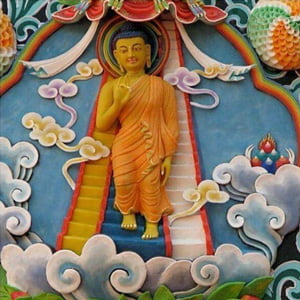
15
- 2021
- Tibet
The Palden Lhamo festival happens on the 15th day of the 10th lunar month in the Tibetan calendar. This festival is to honor a wrathful deity called Palden Lhamo.
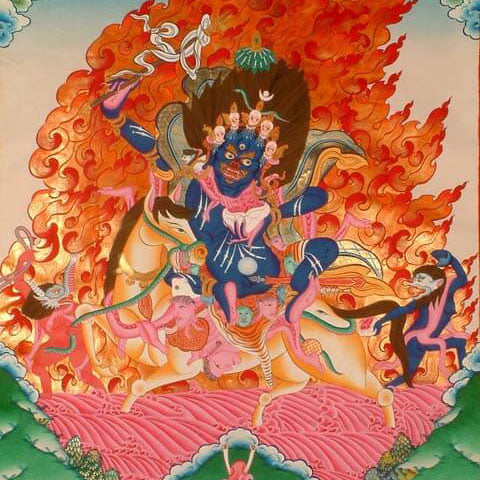
TIBET TOURIST ATTRACTIONS
A local survey proves that Tibet has more than 650 tourist attractions of different kinds of sizes and themes. Tibet, is known as the Roof of the World, is the highest place to heaven, it is a mysterious, exotic place that many outsiders yearned for. It is one of the reasons why many tourists want to travel to Tibet, The vast land Tibet is not only famous for its beautiful natural landscapes also is widely known for its marvelous culture. Since the beginning of the 20th century, the massive, tranquil land with its majestic scenery and mysterious religious culture has exerted an awesome draw on travelers. If it’s your first-time Tibet travel, you can’t miss the top Tibet tourist attractions listed below, because they represent the most authentic Tibet.

